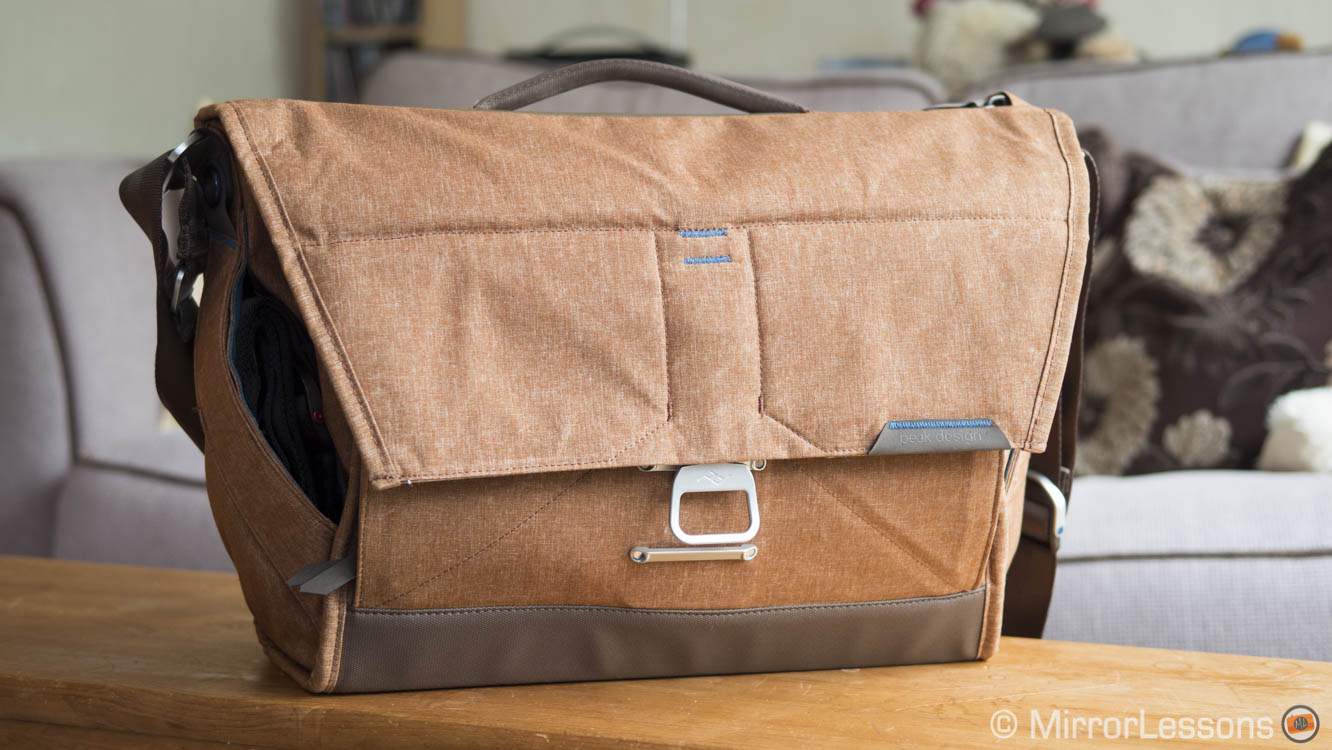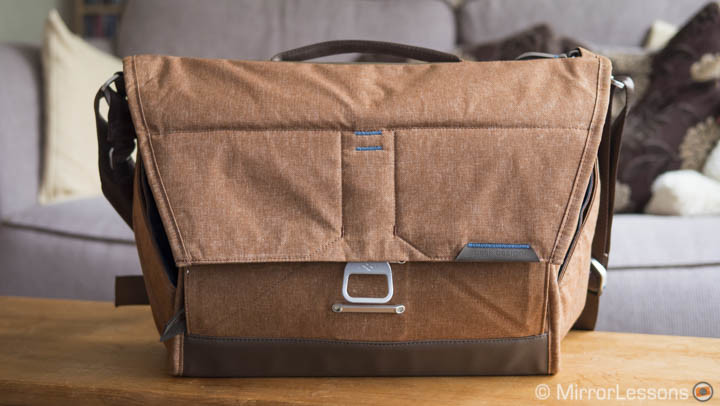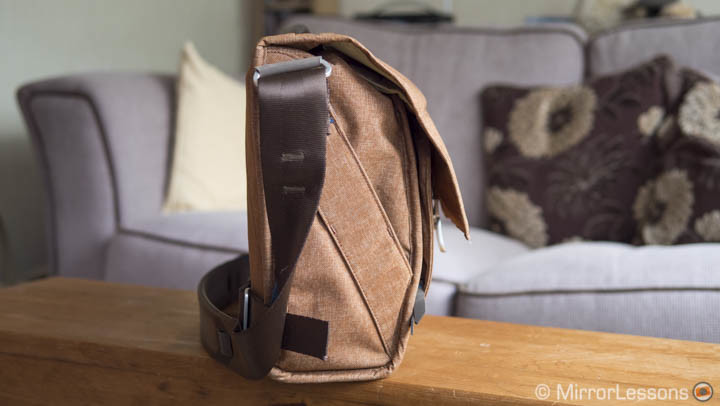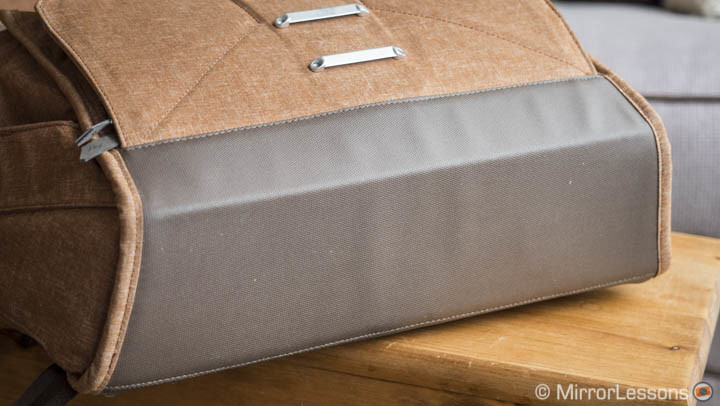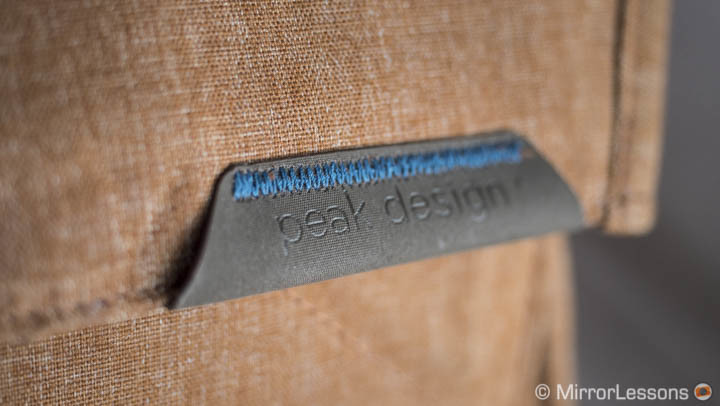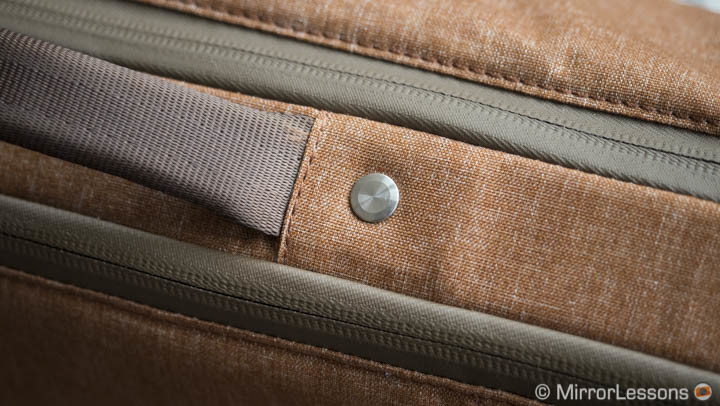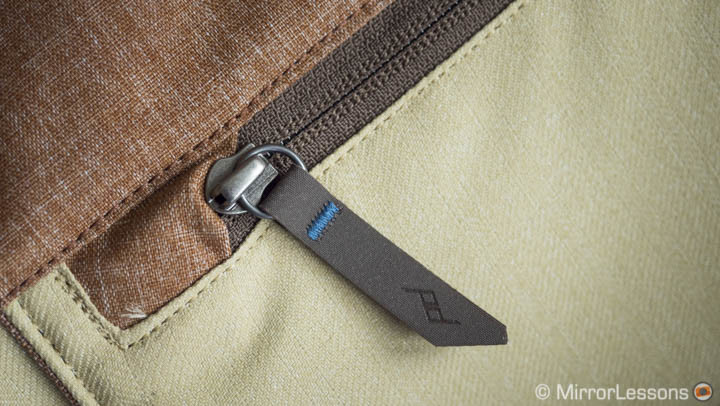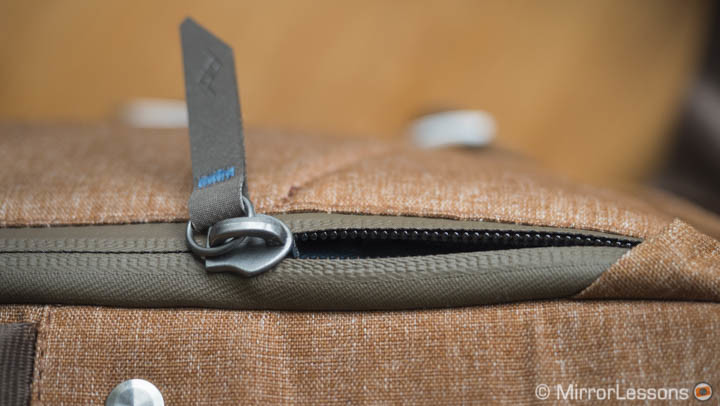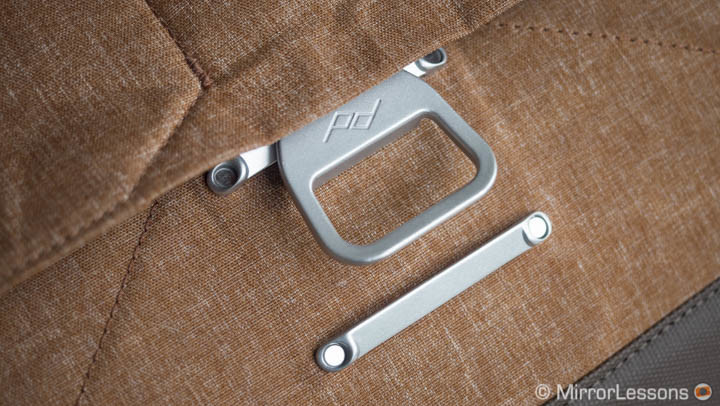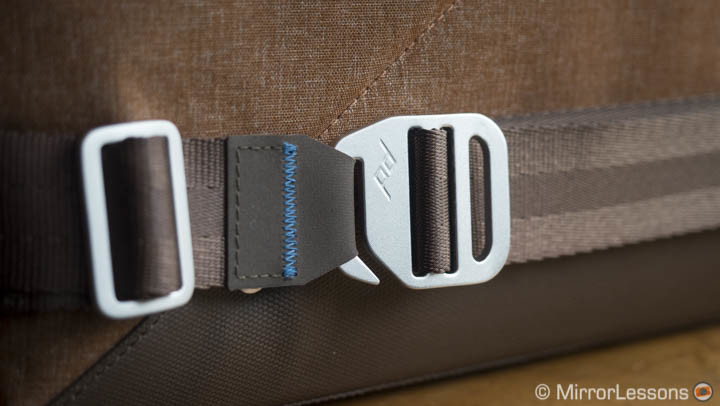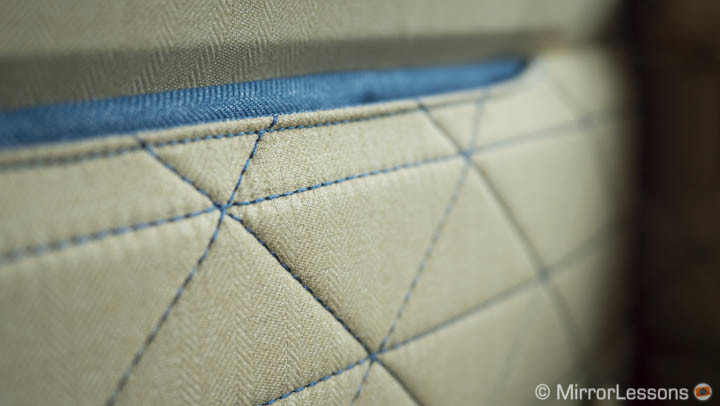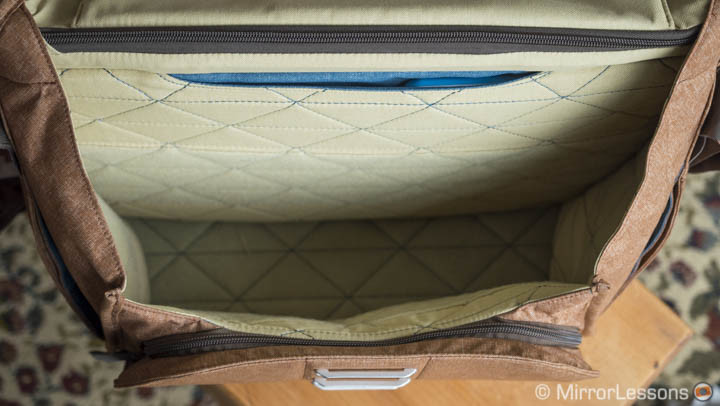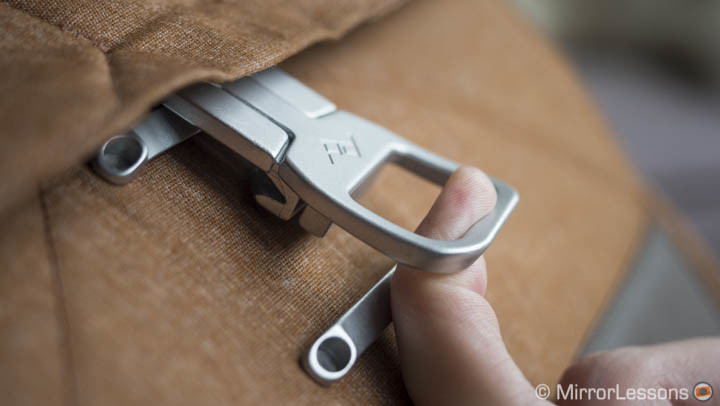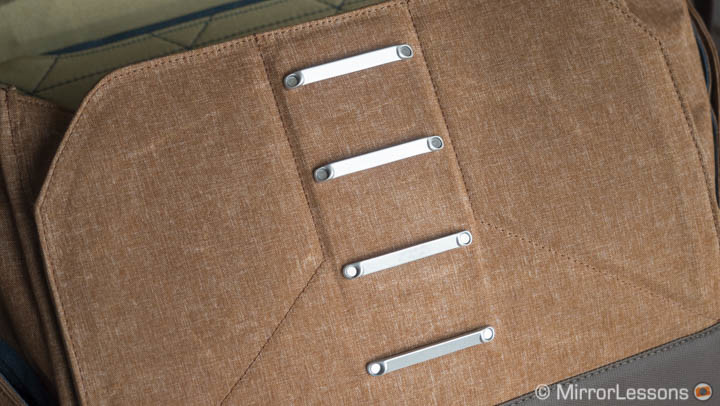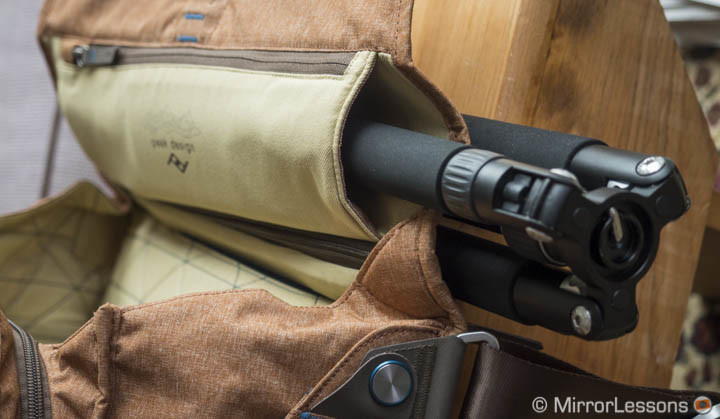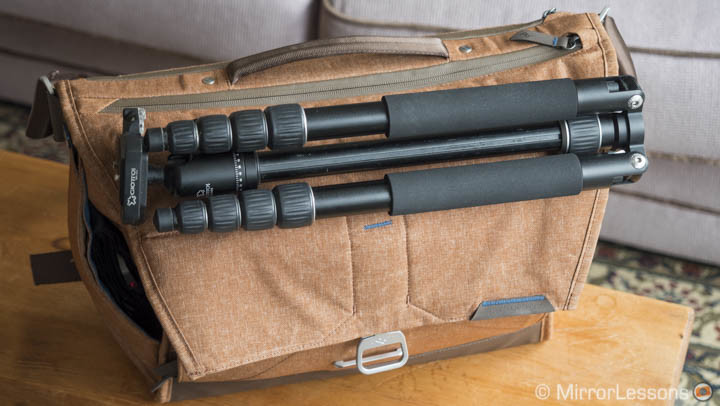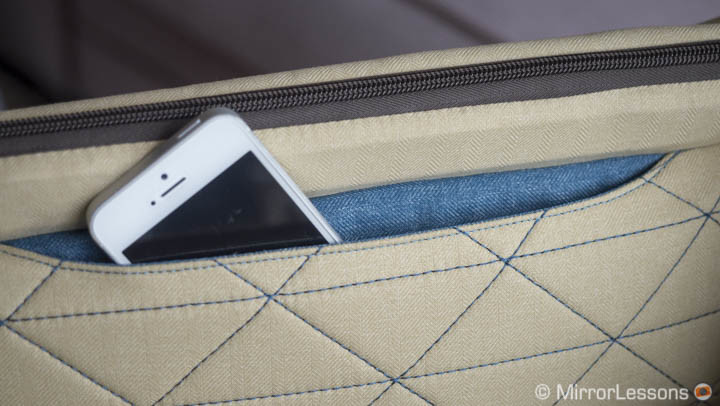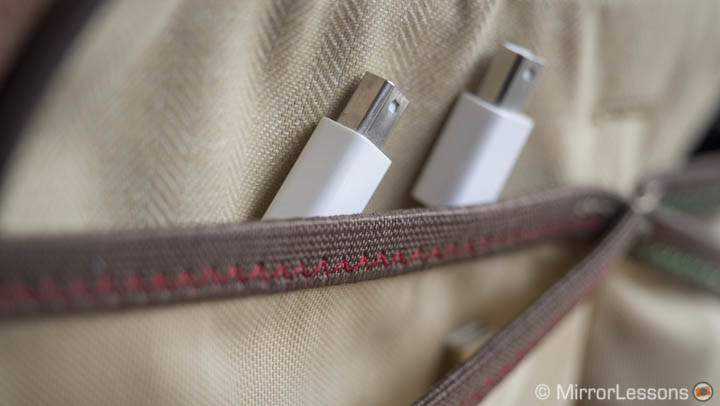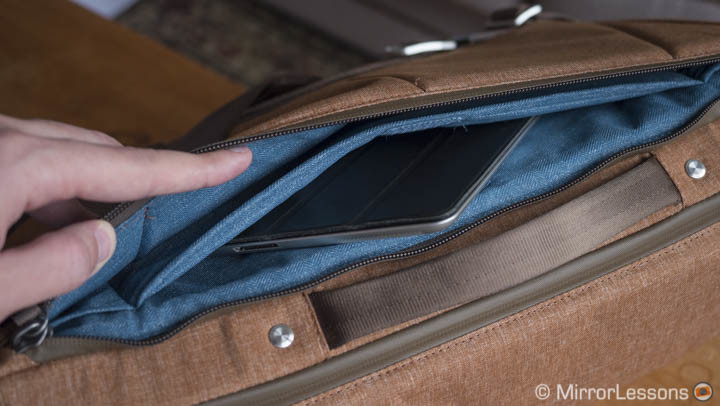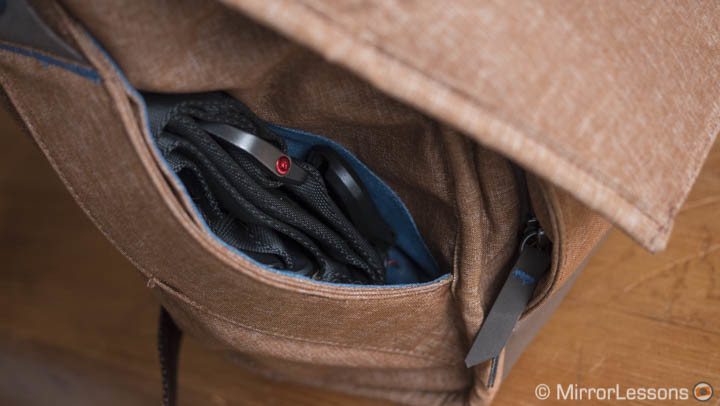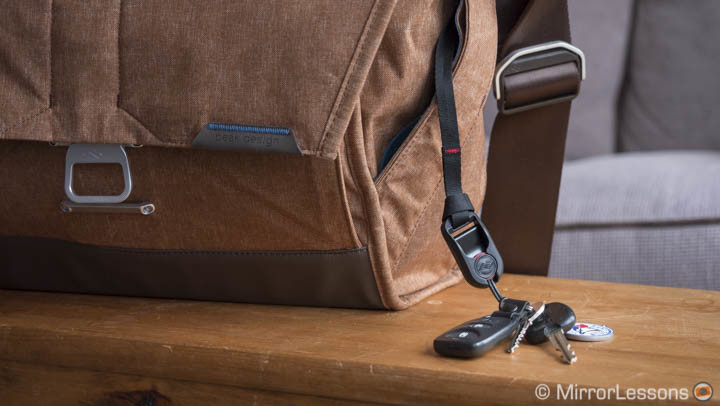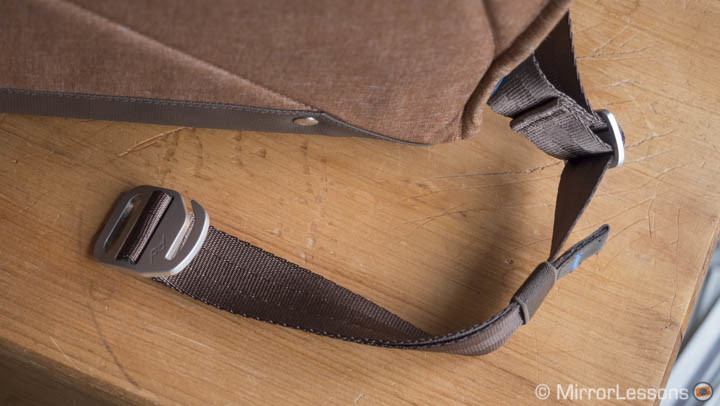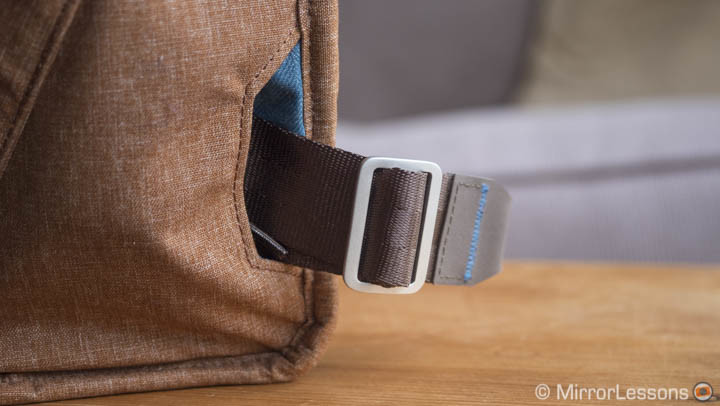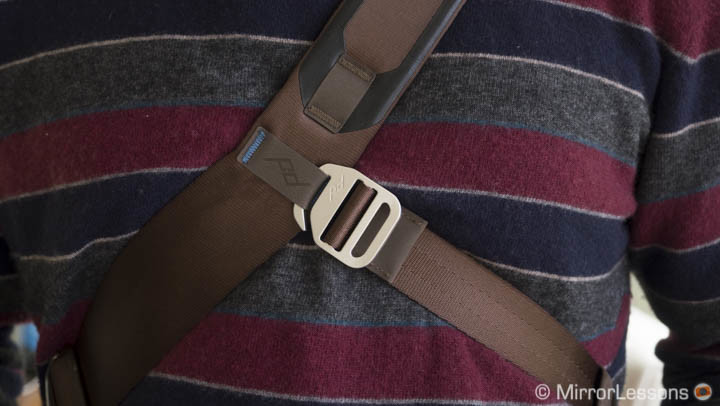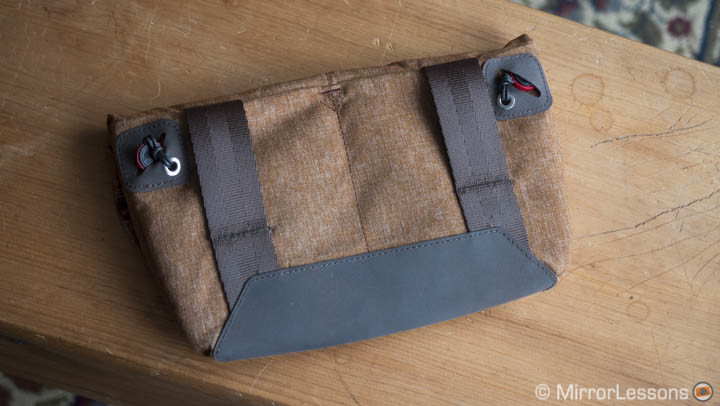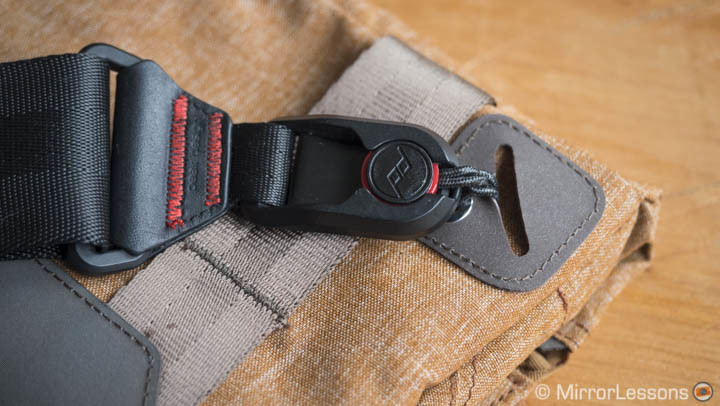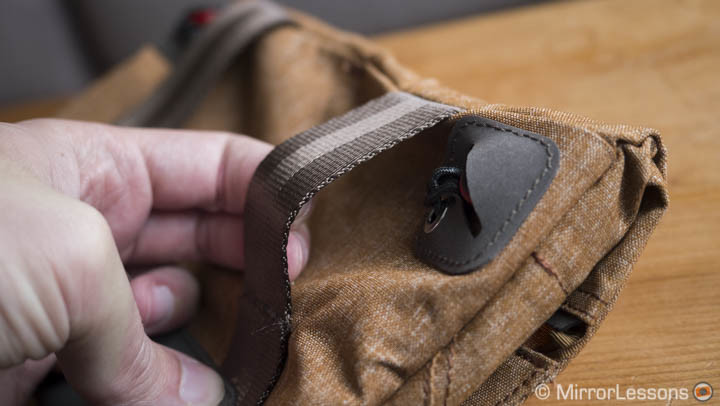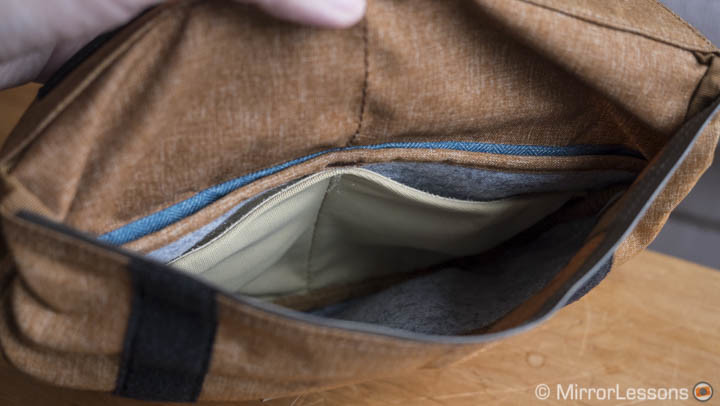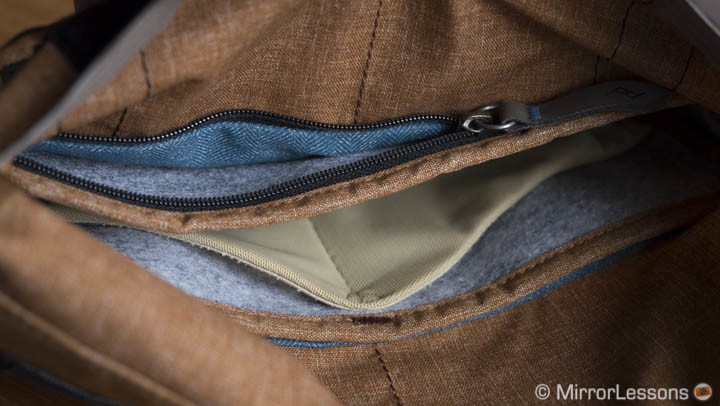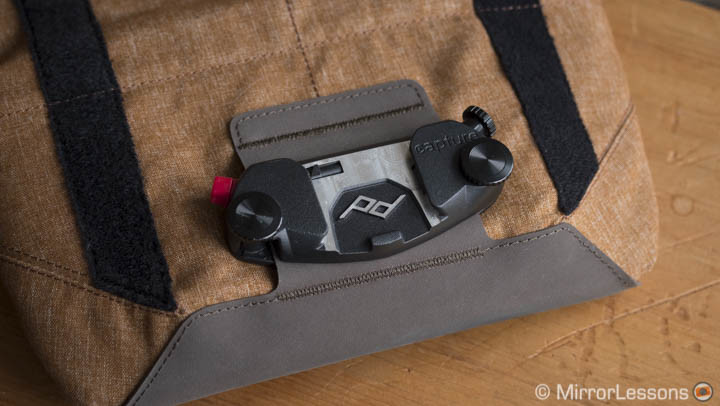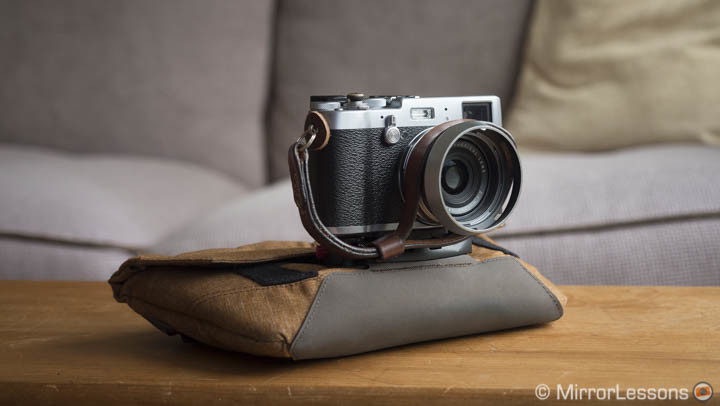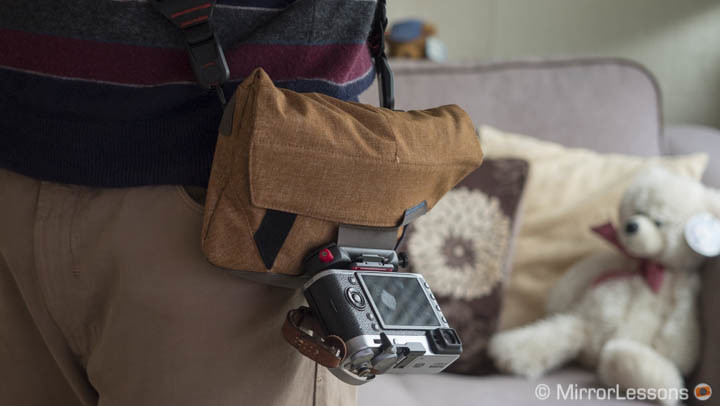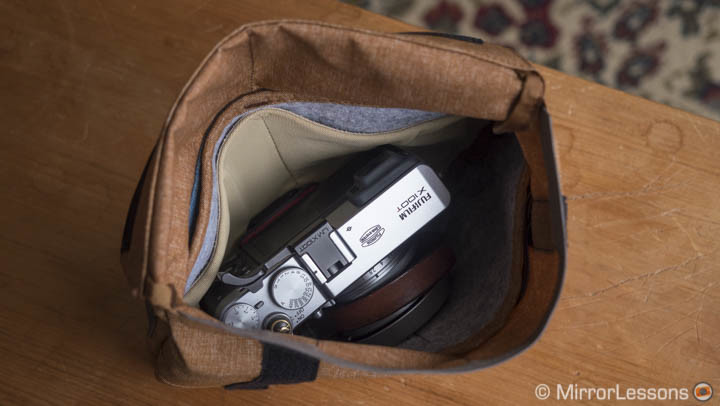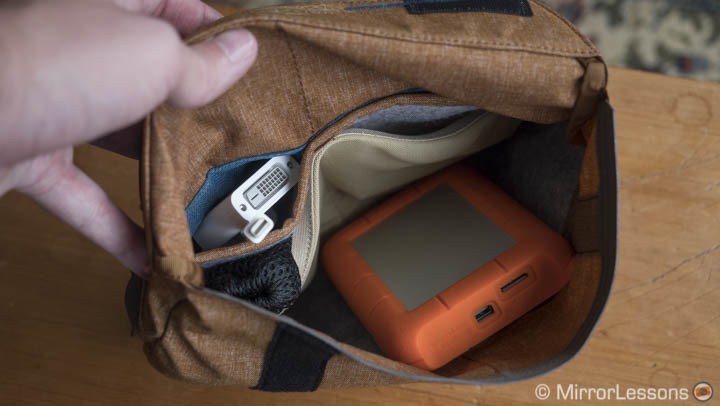More than once I’ve come clean about my weakness for camera bags. We have the chance to review quite a few of them for MirrorLessons and, as you would expect, we usually focus on products that suit mirrorless cameras. However, this time, the bag I am about to describe isn’t just for compact system cameras.
The company behind the new bag is Peak Design, whose various products we’ve had the chance to try numerous times already. Their recent camera strap solution with the anchor link connectors has become our personal favourite. We use different cameras all the time and being able to change straps so quickly is a godsend.
The newest product from the San Francisco-based team is called The Everyday Messenger – a record-breaker even before it was born. It is, as of today, the most successful Kickstarter campaign ever with $4,869,472 pledged despite having an initial goal of only $100,000. It is also the company’s first venture into the camera bag market and to do this properly, they collaborated with one of the most followed travel photographers on the web, Trey Ratcliff.
Peak Design kindly sent me a unit to review and it arrived the day before I left for a two-week holiday to Italy and France to see my family. The timing couldn’t have been better!
Travelling to Italy and then France gave me the opportunity to test the bag in many conditions, including good and bad weather, trains, and planes. I even had to pack the bag with the inevitable at the last minute – a chunk of Italian parmesan cheese!
Peak Design Everyday Messenger Main Specs
- Outer Dimensions: 12 X 17 X 7 in. (30 X 43 X 18 cm)
- Weight: 1100g (2.5 lbs.)
- Laptop compartment: 15 x 10 x 2 in
- Materials: Ultralight waxed Kodra synthetic canvas with DWR coating for weatherproofness, poly-spun mixed twill interior, waterproof galaxy foam bottom liner, compression-molded high-density EVA foam dividers and protective panels, die-cast and stamped aluminum hardware with sandblasted finish and protective clear coat.
Design and Build Quality
The Everyday Messenger bag is available in two colours. I received the Heritage Tan (brown) version but after seeing the Charcoal (grey) version at the Cambrian Winter Show, I admit I prefer the latter. Regardless of the colour, the design clearly stands out from the standard modern or classic shoulder/messenger bags you see around. The Everyday Messenger includes some distinctive geometrical lines that characterise the overall shape of the bag as well as its Multi-Panel construction. The bag is large because it can house a 15-inch laptop and this is definitely one the first specs that help you understand if it can suit your needs. It meets airplane cabin restrictions and I haven’t had any problems putting it under the front seat.
What stands out after the first days of use is the stunning build quality.
The Everyday Messenger is certainly one of the most well-built and robust bags I’ve ever used. It is not just the quality of the materials but also the attention to every little detail.
The exterior is made of Weatherproof waxed 500D Kodra with high-density padding and a DWR undercoat. I used it on rainy days without any fear of my gear getting wet. The bottom is reinforced with an additional Hypalon layer so that you can lay it down on dirty or wet surfaces. The exterior zippers are weatherproof and very smooth to use. Additional details including the latch, strap attachments and various refinements confirm the great premium build quality of this bag.
The closure mechanism is made of stainless steel while the buckle and other parts of the straps are made of aluminium. The main strap, as well as the two smaller padded straps, are made of the same material as a car seatbelt which is a characteristic shared by the Peak Design Slide camera strap.
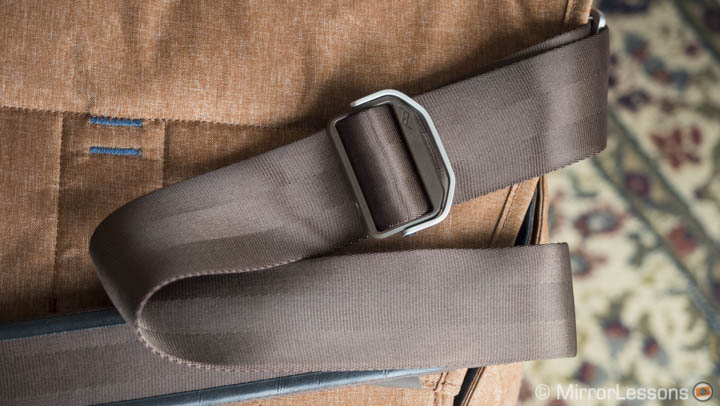
Finally the interior of the main compartment is made of soft, durable mixed-cotton. The inside of the bag feels dense. They are based on a Multi-Panel design with an adjustable latching system so that the bag can expand according to the user’s needs. The bag is rigid and never loses its shape no matter how full it is.
Ease of use
It doesn’t matter how good the build quality of a bag is, it also has to have a practical side. Thankfully this is another positive aspect of the PD Everyday Messenger.
Let’s start with the main closure mechanism, which like the anchors is also patent pending. Peak Design calls it MagLatch™ and is a brilliant idea. At first it could appear that the bag can be opened quite easily but this isn’t the case. I had my bag checked twice at the airport security and each time the officers asked me to open it because they couldn’t figure it out. You actually need to pull the handle first, then lift the flap. It also features a magnetic clasp, so even when you lower the flap quickly without securing it, the bag remains closed.
The MagLatch™ can be attached to four different locking points depending on how full the bag is. This is another very interesting aspect of this bag. I usually find the second (starting from the bottom) enough even when it is fully packed. However if I need to put something extra inside last minute, such as a simple scarf or a sweatshirt, I will always find room for it since I have those two extra locking points to close the bag.
Slide between the two images below to compare the empty and full bag.
[twentytwenty]

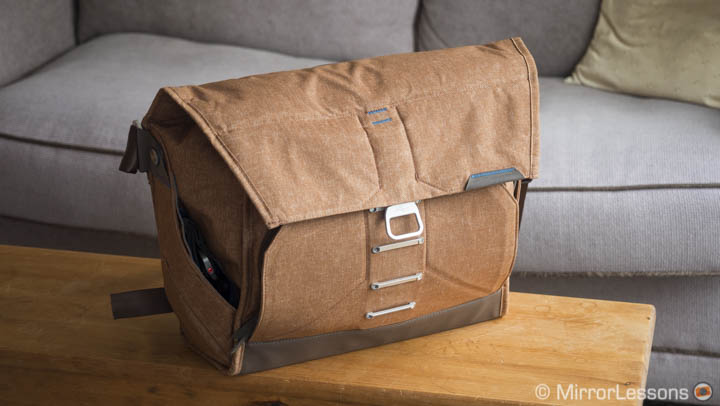
[/twentytwenty]
The closure mechanism and the expansion capabilities make this bag very convenient because you often end up wanting to pack something extra, especially when traveling.
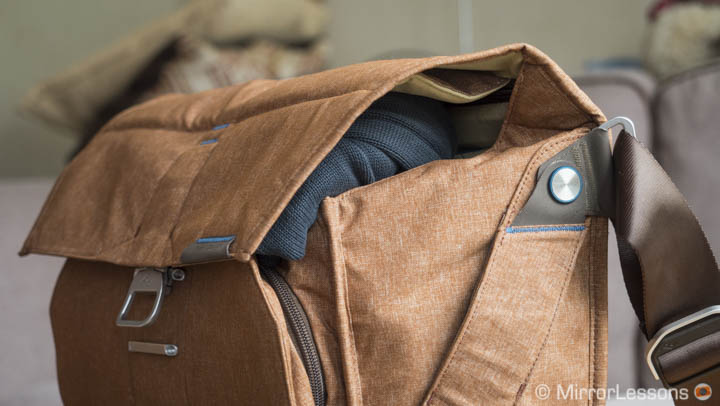
On top of the bag, you will find a quick-access zipper to reach your gear so you can avoid opening the flap. Solutions like this are not new and we’ve appreciated it on other bags as well, such as the recent Tenba Switch (review here). On the PD Everyday Messenger it works very well when the bag is not packed to its maximum capacity. Otherwise the opening remains tight, making it more difficult to take the gear out. The flap can be used to carry a tripod as well. On the inside there is a dedicated pocket to insert one of the three legs. The tripod remains securely attached to the flap and a silicone band is provided to keep the other two legs on the outside together.
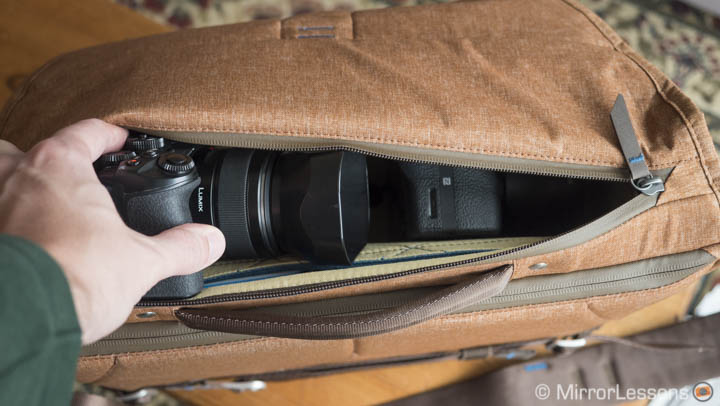
Turning to the main internal compartment, we find another interesting idea. There are three Origami-inspired FlexFold™ dividers provided that can be folded into different shapes according to the amount of gear you need to carry and how you want to arrange it inside the bag. They can be folded to three different heights or become a vertical divider to store one item below and one above. I admit it took some practice to figure out how to fold them properly at first. I guess I’ve never been good at origami!
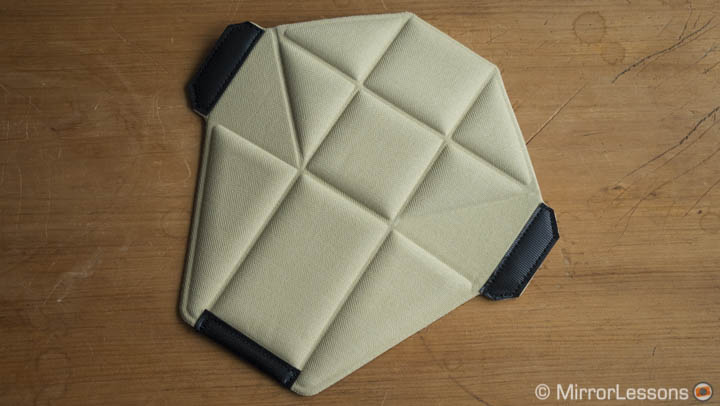
[twentytwenty]
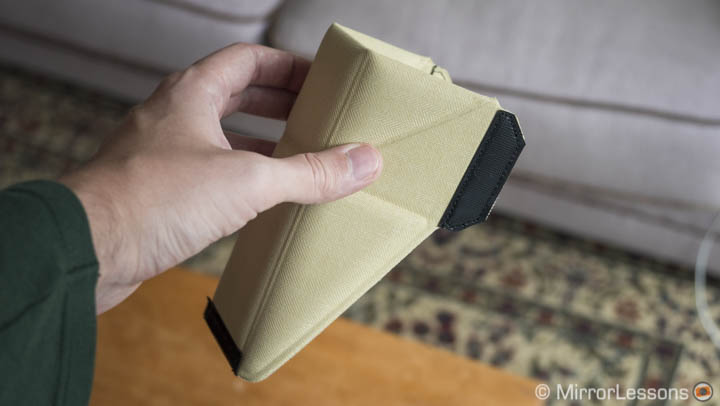
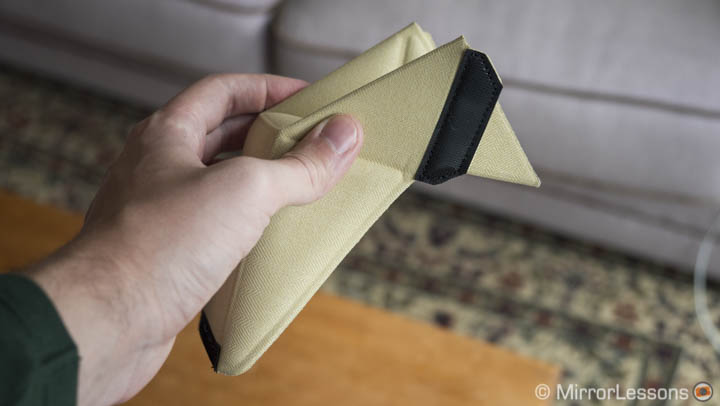
[/twentytwenty]
My origami skills aside, this is definitely an innovative way of designing a camera bag divider.
Perhaps the only thing the bag is missing is one or two smaller versions to create extra divisions when carrying smaller gear like Micro Four Thirds prime lenses. Another thing I noticed is that the velcro on the divider itself is not strong enough. The whole idea is that you can fold it while it is already inside the bag but often doing so detaches the velcro from the inside. However the concept is still excellent and I think it is just a matter of implementing larger velcro pieces on the FlexFold™.
Below you can see a few examples of how the Origami type dividers can be used.
[twentytwenty]


[/twentytwenty]
[twentytwenty]


[/twentytwenty]
The main compartment has two extra pockets. The first is on the rear and allows you to quickly reach flat items such as a smartphone. The second pocket has a zipper and is located on the internal side of the main flap. In the latter I carried my ID and plane/train tickets. That pocket’s size is just perfect for these kinds of documents.
The bag has one main front pocket and this is another aspect I really like. It opens with a zipper and contains lots of little elastic pockets. Peak Design even differentiates them by stitching them with different colours to help you organise your stuff. I admit I didn’t notice the difference in colour until I read the specs on Peak Design’s official website! But that didn’t stop me from enjoying this compartment anyway. There I put many small accessories such as spare batteries, lens cleaning cloths, a small air pump, USB/iPhone cords, a portable mobile charger and a small microphone. I even found room for a portable hard drive such as the Lacie Rugged series.
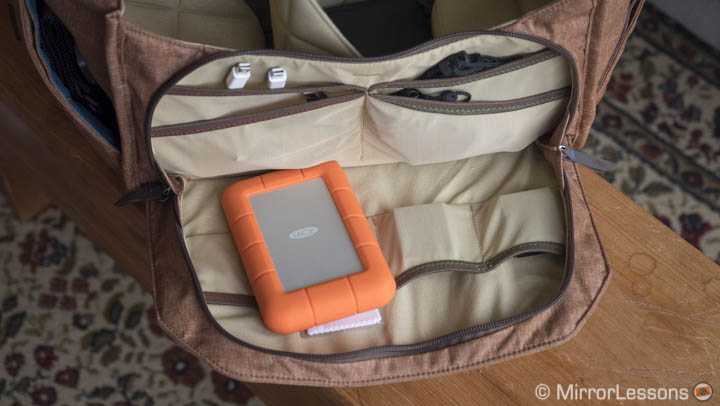
On the rear you will find the third compartment designed to carry a 15 inch laptop computer and a 10 inch tablet. You can access it via another zipper from the other compartments meaning that you don’t need to open the main flap. I always prefer this solution on messenger bags. The tablet fits inside a dedicated soft pocket. There are two additional vertical pockets next to it.
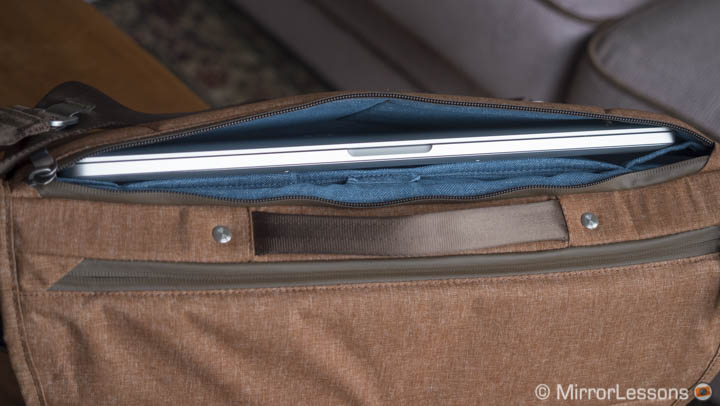
The laptop compartment is the only real criticism I have of this bag.
When the Everyday Messenger is fully packed, my 15 inch MacBook Pro Retina fits just right. With a thicker laptop, it could be more of a problem. Also, when you pack a laptop, the main compartment becomes tighter. Basically the laptop compartment “steals” space from the main compartment and vice versa.
Two additional pockets can be found on either side of the bag. They are actually hidden so you might not notice them at first. They have a diagonal design and lack a secure mechanism so I wouldn’t put something precious in there despite the PD ad video showing that they are a good place for smartphones. I used one to store my Slide strap (review here) for example. What is interesting is that they also included an anchor attachment where you can place your keys or other similar items. Here I have another small criticism. A pocket designed that way could have been fine on one side only. On the other side, I would have preferred a more traditional elastic pocket where I could put a bottle of water for example.
Now let’s talk about how comfortable this bag is to carry around.
The main strap is very good and because there aren’t any dangling ends, it won’t twist upon itself like other straps. It is reinforced in the middle so that it is thicker and more comfortable on the shoulder. One side is covered in rubber to make sure it doesn’t slip away. By default, that rubber side remains on top when you carry the bag. Peak Design suggests that you simply flip the strap to take advantage of the rubber part. If you don’t like the idea of the strap being twisted, you can remove it and reinstall it the other way around.
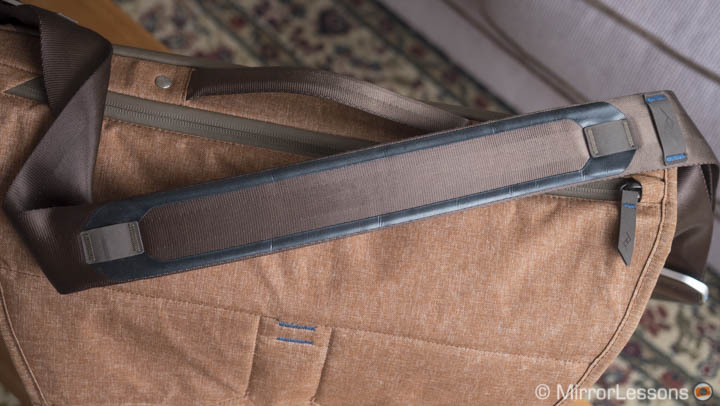
Being a shoulder/messenger type bag, the weight will put pressure only on one shoulder and that can rapidly become uncomfortable. Thankfully, Peak Design came up with a solution for this as well. First, the main strap has the same length adjustment mechanism found on their Slide camera strap. It is easy to adjust the length in mere seconds but bear in mind that you may struggle with it when the bag is already on your shoulder. It is also harder to adjust when the bag is heavy.
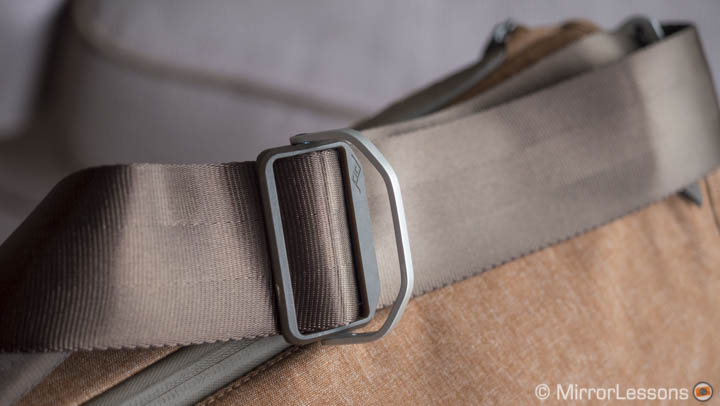
This mechanism also allows you to choose how you want to carry the bag: as a messenger bag or over the shoulder as a traditional shoulder bag. For longer walks, you can also use two additional padded straps. They are hidden inside two small pockets at the bottom of the bag. The first attaches to the main strap and keeps the bag more static on your back. This can be very useful if you are on a bike or motorcycle for example. The second one attaches to the first padded strap and can be used around your waist.
[twentytwenty]


[/twentytwenty]
These two extra smaller straps are definitely useful but the load will still weigh down on one shoulder. It is not a solution that can substitute a proper backpack for long walks if you carry heavy equipment. The two smaller straps at the bottom can also be used to attach the bag to the handle of a wheeled luggage. I admit that at first I didn’t think about this solution and was lamenting the lack of a proper pass through. Once I set it up and tested it, I found it works well. You can tighten the straps to make sure that the bag won’t lean forward.
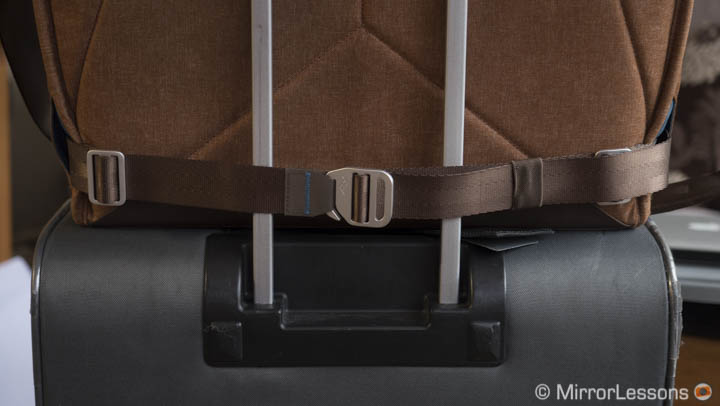
Compatible accessories
The nice thing about Peak Design products is that they are compatible with one another. The Everyday Messenger is no exception. There are two dedicated attachment points on the sides designed for their Capture Clip. The brand actually promoted this carrying solution a lot with the advertising campaign of the bag. You can keep your camera securely attached to the outside of the Everyday Messenger and grab it at any time without the need to open the quick-access zipper or the main flap.
Although this option will certainly be of interest for some Capture Clip owners, I admit I didn’t use this solution that much despite owning one. For me the Everyday Messenger is the type of bag I use to carry my stuff from Point A to Point B rather than being a bag I would carry while shooting. Also when walking in crowded environments, the camera as well as the bag can easily be bumped and I don’t like the idea of having my camera on the frontline. I would simply carry the camera with a regular strap.
However I found this Capture Clip idea more interesting with another small Peak Design bag. Along with the Everyday Messenger, PD also released the Field Pouch. It is much smaller and designed for a completely different purpose but I also found it a great companion during my Italy/France trip.
Like the Capture Clip, it is sold separately. The material used is the same, as is the colour choice, but the pouch has a soft design. It closes with two vertical velcro strips. The small bag doesn’t come with a built-in strap but can be attached to the Slide camera strap via the same anchor links. On the rear there are two belt loops, meaning that the bag can also be attached to your trouser belt or to another belt bag such as the Cosyspeed series (review here).
Inside you will find 4 small pockets on one side and a zippered pocket on the other that is divided into two internally. The funny thing regarding the latter is that I didn’t notice it at first because the zip is hidden by the main stitches.
Finally, on front there is a dedicated attachment point for the Capture Clip. For my daily walks in Turin and Lyon, I left the Messenger at home and carried my Fujifilm X100T attached to the CC and a few small items inside the bag. It was a very light and comfortable carrying solution. It works best with small and light cameras such as the Fujifilm X100 series. The X100T can also fit inside with the JJC lens hood attached. However you will need to place small and flat items in the other pockets.
For my main transfers via train or plane, I kept the Field Pouch inside the Everyday Messenger and used it for my portable hard drive and some Macbook accessories. This is why the Pouch can be a great companion for the Everyday bag.
How much gear can I carry? A practical example
As usual with our bag reviews, here is a practical example of the amount of mirrorless gear and accessories I can carry inside the bag. I based this example on our Micro Four Thirds gear since we own multiple cameras, lenses and accessories for the system.
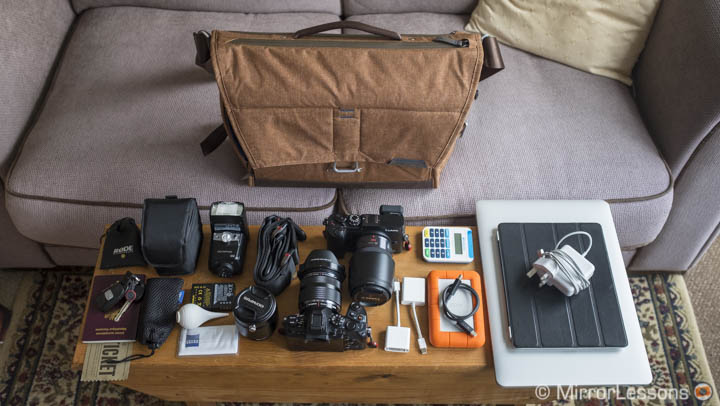
Main Compartment
- Olympus OM-D E-M1 with 12-40mm f/2.8
- Panasonic GX8 with Lumix 35-100mm f/2.8
- Olympus 75mm f/1.8
- Nissin i40 flash with its soft case
- Olympus FL-600r flash
- Macbook charger
- Calculator (small pocket)
Front pocket
- Lacie Rugged SSD hard drive
- Thunderbolt cord
- Anker Mini mobile charger
- Rode Smart Lav+
- Lens cleaning cloth
- Spare batteries (x2)
- Air pump
Rear pocket
- 15 inch Macbook Pro Retina
- 10 inch iPad Retina
Side pockets
- Peak Design Slide strap
- Car/House keys
Main Flap
- Passport, train tickets (Zip pocket)
Conclusion
The Everyday Messenger is an excellent bag and the fact that it is the first bag the Peak Design team has ever designed makes me think that they have a bright future ahead in this market. The build quality is definitely one of its best characteristics. It has all the pockets you need and the Origami type dividers are a smart addition. The main strap is comfortable while the two additional stabiliser straps can be of help in multiple ways, from stabilising the bag on your body to attaching it to wheeled luggage. There is enough space inside for any mirrorless camera system (and even DSLRs) including the largest lenses you can find in the Micro Four Thirds, Fuji X or Sony FE catalogue. It is easy to open, close and simply put: to use. The bag is priced at nearly $250 and in my opinion, it is totally worth the price for the build quality and the various features you get.
The only negative aspect I found concerns the laptop compartment. When the bag is full, the laptop pocket becomes too tight; I only just managed to slide my 15 inch MacBook inside. Although it is true that nowadays potable computers are getting thinner and thinner, owners of a thicker laptop might have more trouble and the only solution is to re-arrange or remove some gear inside the main compartment. Also, when packed at the maximum, the main space inside becomes tighter as well.
Finally, a point directed towards mirrorless users: this is not the bag I would carry with me on a daily outing. If I don’t need my computer or extra accessories, I prefer a smaller bag that can comfortably fit one body and two or three lenses. For me the Everyday Messenger is a travel bag, whether it be for pleasure or work. If the sales of this one go well, I hope that Peak Design will release a smaller version designed especially for mirrorless cameras. All the groundwork is in place to see the rise of a successful family of bags. So, for the first time, all I can say is: “Chapeau!” (“Hats off!” in French)
 What I like about the Peak Design Everyday Messenger
What I like about the Peak Design Everyday Messenger
- One of the best builds I’ve come across in a camera bag
- Can expand if you need to carry more items
- The MagLatch™ makes opening/closing the bag easy and safe at the same time
- The FlexFold™ Origami type dividers are well-designed
- It has a separate compartment that fits a 15 inch laptop / 10 inch tablet
- The seatbelt type strap is very comfortable and the length can be adjusted
- The two extra padded straps can be used for multiple purposes
- Enough pockets to carry various accessories
- Compatible with other Peak Design products such as the Capture Clip
 What I don’t like about the Peak Design Everyday Messenger
What I don’t like about the Peak Design Everyday Messenger
- When packed to the maximum, the space for the laptop becomes very tight and this might be a problem for devices that are thicker than a Macbook Pro.
- I wish that at least one of the external side pockets could be designed to carry a bottle of water or something similar
- There isn’t enough velcro on the Origami dividers, making them quite weak as a result
- Even though the two smaller stabiliser straps help to balance the weight, it is uncomfortable to carry all day when fully packed
